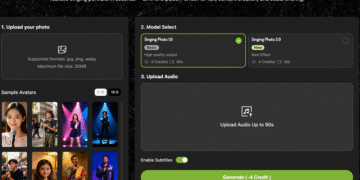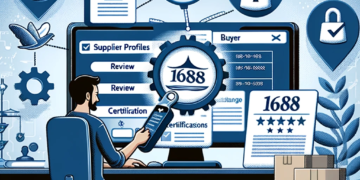If you’re a content creator in 2025, you already know YouTube isn’t just a video platform it’s a business, a battleground, and, for some of us, the main source of income. Whether you’re trying to monetize, hit the algorithm just right, or simply want your content to look as good as it is, you’ve probably asked yourself this:
“Should I buy YouTube likes?”
I get it. It’s controversial, it feels like cheating, and yet, every successful creator knows: perception matters.
Here’s the truth: buying YouTube likes can work if you know what you’re doing. I’m not talking about spammy bots or random bulk buys from shady sellers. I’m talking about strategic use of social proof, the kind that actually helps you gain traction, not jeopardize your channel.
This isn’t going to be a fluff-filled blog packed with fake enthusiasm or promotion disguised as advice. I’ve been in this space long enough to know what actually works, what’s a red flag, and where real creators are going for results without risk.
Let’s cut through the noise and get into it.
The 5 Sites That Actually Work (Without Wasting Your Money)
These aren’t affiliate picks. These are tools creators actually use behind the scenes including those who’d never admit it on camera. For each one, I’ll cover what it does right, where it might fall short, and who it’s best for depending on your channel size and growth stage.
1. TheYTLab
Let’s start with one of the most no-nonsense platforms in this space: TheYTLab. It’s not flashy, and it doesn’t try to pretend it’s an all-in-one social media agency. What it is though, is effective.
What You Get
TheYTLab offers straightforward pricing for YouTube likes, views, subscribers, and even comment engagement. Their packages are clearly labeled, priced per 1,000 interactions, and offer retention-based options, something a lot of “cheap views” sites don’t even mention.
Likes pricing sits in the $1.20 – $4.14 per 1,000 range, depending on speed and type (Super Fast vs. English Lifetime). There’s also a neat option where you can combine likes with views or subscribers, which is great for creators who want to simulate full-spectrum engagement.
What It Does Right
- Transparent rates
- Country-specific and real likes
- Offers combo bundles: likes + views + comments
- Lifetime gurantee
Where It Falls Short
- UI feels more like a backend tool than a user-friendly SaaS
Best For: Creators who want complete control over orders and pricing. It’s not about automation here, it’s about manual precision and affordable rates.
2. LenosTube
If TheYTLab is all about speed and volume, LenosTube is its more refined, credibility-driven cousin.
Lenos doesn’t just sell engagement it sells the idea of organic-like credibility. The tone is different here. This is the platform for creators who care about how things look from the outside especially when you’re building a monetized or niche authority channel.
What You Get
You’re buying more than numbers, you’re buying realism. The likes here come from real, targeted viewers. As a result, prices are higher, starting around $0.04 to $0.08 per like, depending on country and quantity.
There are also package combinations with watch time and comments, which gives your video a full behavioral pattern (what YouTube watches for). They even offer press releases and external promotion to drive visibility.
What It Does Right
- Likes come from real accounts with history
- Slow, natural delivery especially good for monetized channels
- Detailed explanation of each service (rare in this space)
- Trusted reputation in creator communities
Where It Falls Short
- Prices can add up quickly
- Not great for one-off viral pushes more built for sustainable growth
Best For: Channels that are already monetized or brand-focused, and want to scale safely without risk.
3. SocialPlug
SocialPlug is the slickest in the group with polished UI, dashboard functionality, fast delivery, and a Shopify-style checkout experience.
It’s the tool that makes you feel like you’re running your own growth agency. It offers nearly every platform imaginable YouTube, Instagram, TikTok, Reddit, Twitter, and even less common ones like Threads or Clubhouse.
What You Get
For YouTube likes, pricing starts at $0.036 per like (roughly £0.03), with options up to 50,000 likes. Everything is sold in clean, segmented packages, with no account login required.
Likes here are from “active accounts,” and they’re processed in less than 24 hours. Their major play is volume with the appearance of realism, not ultra-specific targeting.
What It Does Right
- Ultra-fast checkout with crypto/card options
- Real-time status tracking in the dashboard
- 24/7 support with actual response times
- Great for bulk campaigns or rapid testing
Where It Falls Short
- Engagement is mostly surface-level and lacks behavioral depth (watch time, comments, etc.)
- Lacks detailed customization for niche creators
Best For: Influencers or marketers who need speed and scale especially when testing headlines, thumbnails, or virality triggers.
4. Media Mister
Media Mister is probably the most established platform on this list. It’s been around since 2011, and if you want a service that plays by the book with region targeting, drip feeds, refunds, and chat support, this is the one.
What You Get
You can buy YouTube likes in single or recurring packages, from countries like the UK, USA, Germany, Brazil, and more. You also get access to non-drop likes and comment likes, community post likes, and even press engagement if you want to build out your authority.
Pricing starts around $9 for 50 likes, but what you’re really buying is credibility and customization.
What It Does Right
- Likes from real users in selected countries
- Clear delivery windows (e.g., 8–15 days for 2,500 likes)
- One-time and recurring options
- Money-back guarantee and retention policy
Where It Falls Short
- Older site design feels more like an internal dashboard than a consumer product
- Slower delivery compared to others
Best For: Creators who care about retention, and want to match their likes with their viewer location and niche for long-term growth.
5. UpViews
UpViews might be the underdog here, but don’t underestimate it. It quickly gained traction in 2024–2025 thanks to its simplicity, low entry price, and surprisingly strong retention.
It’s one of the few platforms that doesn’t look shady and still offers cheap services.
What You Get
Likes pricing isn’t published per unit in bulk, but users report around $3–$5 per 500+ likes depending on delivery speed and campaign type. You fund a wallet, pick a package, and watch your metrics rise. Most orders are fulfilled within 24–48 hours.
What It Does Right
- Super easy onboarding and checkout
- Reviews actually match real performance (rare)
- Wallet system lets you stack campaigns quickly
- Reliable mid-tier growth tool
Where It Falls Short
- Limited tier variety compared to bigger services
- No region targeting (yet)
- Doesn’t offer behavioral engagement like comments or watch time
Best For: Small creators and agencies looking for a budget-conscious way to test YouTube like strategies before scaling.
Why Buying YouTube Likes Is a Real Strategy in 2025
It’s 2025, and YouTube is more competitive than ever. Channels are popping up daily, algorithms are evolving, and if you’re a creator in the UK trying to grow, your content needs more than quality. It needs leverage.
Let’s be honest: You can have the most brilliant, well-edited video on your channel, but if no one’s watching or engaging, the algorithm just doesn’t care.
That’s where social proof comes in and buying YouTube likes can give you the nudge you need if done right.
The Changing YouTube Algorithm:
Here’s what’s changed. YouTube no longer prioritizes just watch time or click-through rates it’s engagement velocity.
This means the platform looks at:
- How many people liked your video within the first 24–48 hours
- Whether those viewers stuck around or clicked off
- How your video compares engagement-wise to similar videos
So when you give your video an early burst of likes, you’re signaling to YouTube, “This content is valuable.” And YouTube, being the machine it is, starts testing your video with more people.
If they also engage, boom you’ve got momentum.
Social Proof & Viewer Psychology:
Think about your own behavior on YouTube. You search for something, and there are three videos:
- One with 25 likes
- One with 300 likes
- One with 4,200 likes
Which one do you click?
Exactly.
People subconsciously trust content that looks validated. Even if they don’t say it out loud, likes are a trust signal. And in the creator economy, trust = clicks, subs, and views.
Is It Safe (and Ethical)?
Let’s get the ethics chat out of the way. Buying likes doesn’t make you shady unless you’re trying to fake your way into something you didn’t earn.
But if you’re using likes to:
- Build momentum on genuinely good content
- Kickstart engagement on a low-traffic but high-quality video
- Compete on a platform where social proof is currency
Then no, it’s not unethical. It’s a strategy.
That said, not all services are safe. You need:
- Real, human accounts (not bots that get purged)
- Drip-feed delivery (so it looks organic)
- Solid retention (likes that don’t vanish in a week)
- A refund policy if it all goes sideways
YouTube isn’t dumb. If you’re flooding a brand-new video with 10,000 fake likes in an hour, you’re going to get flagged. But smart services spread delivery over days, from real users, with patterns that mirror organic engagement.
In short: it’s safe if you choose the right provider which brings us to the next part.
What to Look for in a Legit YouTube Likes Service
Before we talk about the platforms worth trying, let’s set one thing straight: most sites that sell YouTube likes are complete garbage.
I’ve tested dozens over the past few years. Some inflate your numbers for a day, and then your likes vanish. Others deliver a bunch of bots that do nothing but damage your trust with the algorithm. A few even put your channel at risk of suspension.
So if you’re going to do this especially in 2025, when YouTube’s algorithm is smarter than ever you need to be picky. Here’s what actually matters when choosing a provider.
Real vs. Fake Engagement: Don’t Get Burned
This is non-negotiable.
A lot of services promise “high quality” likes, but if you dig deeper, they’re sending fake engagement from:
- Dormant accounts
- Accounts with no profile pics, no activity, no subscribers
- Or worse, bots programmed to click but not watch
YouTube’s AI can detect this. So even if the number goes up, your retention and CTR metrics tank, and you lose organic reach. A good provider sources from real users, often through incentivized networks, ad exposure, or manual delivery.
Look for:
- Mentions of “real users” or “authentic accounts”
- Services with retention guarantees (e.g., 60 days)
- Clear disclaimers about how likes are delivered
Delivery Speed & Retention Rates:
Want 1,000 likes in just 10 minutes? Aahh 1000 likes in 10 mins. Sounds cool. But not to YouTube.
Sudden spikes can look fake unless they’re earned (i.e., trending or promoted). A legit service will offer drip-feed delivery, where your likes are spaced out over hours or days.
This keeps your engagement curve realistic and avoids triggering algorithm red flags.
Also: always ask or check how long the likes are retained. Cheap services drop fast. Real services offer a buffer or free refill if engagement declines.
Pricing That Makes Sense
Here’s what to remember: if it sounds too good to be true, it probably is.
If someone’s offering 1,000 likes for $1, they’re either:
- Using bots
- Farming engagement illegally
- Or just not delivering at all
You should expect to pay $5 – $25 per 1,000 likes for good service. Yes, there are cheaper options (we’ll cover a couple), but going too cheap is where creators often get burned.
Look for platforms with tiered pricing so you can scale based on your strategy, not just your wallet.
Country Targeting (UK vs Global Likes): This One’s Overlooked
If your channel targets a UK audience, buying 10,000 likes from Indonesia or Russia probably won’t help you much.
Why?
Because YouTube’s suggested content engine prefers consistency. If you want to grow organically in the UK, your audience (likes, views, watch time) needs to reflect that.
Some providers offer UK-targeted likes; these are generally more expensive but deliver stronger relevance and better audience alignment.
Use this when:
- You’re trying to grow a UK-focused niche (education, reviews, local biz, politics)
- You want your metrics to match your real subscriber base
- You’re running local YouTube ads or regional SEO
Customer Support & Refund Policies: The Safety Net
Here’s the thing with growth services: sometimes delivery fails. Maybe the video URL didn’t load properly, maybe YouTube flagged the accounts, maybe there was a server issue.
What matters is: can you get help?
A legit service has:
- Live chat or email support
- Clear refund or refill policies
- Fast responses (within 24 hours, max)
If they ghost you after payment, they were never worth it to begin with.
Non-Bot Traffic:
Finally, the tech side.
When you buy fake likes from bots, you’re training the algorithm to ignore your content. Bots don’t watch videos. They don’t comment. They don’t share. And they don’t engage further down the funnel.
So what happens?
YouTube sees a like-to-watch ratio that makes no sense. Your average view duration drops. Your bounce rate spikes. And the system thinks, “This content looks fake or clickbait.” That pushes you down, not up.
That’s why all the platforms we’re about to look at have strict anti-bot measures, or at least are known for retention and realism.
What You Should Not Do When Buying YouTube Likes
So you’re ready to buy likes. Maybe you’ve even tested one of the sites above. Cool. But don’t blow it now.
This is the part where most creators, especially newer ones sabotage themselves by going too hard, too fast, or too carelessly.
Here’s what not to do if you’re trying to actually grow and not just fake your metrics.
Don’t Buy Likes on a Dead Video
If a video’s sitting at 20 views and you suddenly dump 1,000 likes on it, guess what happens?
Nothing good.
It’s a dead giveaway to the algorithm that something’s off. And YouTube doesn’t just ignore weird patterns, it actively suppresses them. So now, not only are your likes wasted, but your video’s real reach is likely throttled too.
What to do instead:
Use likes as an amplifier. If your video’s already showing traction, even just a little a boost in likes can help push it further. Think of it like this: use the fire to grow the flame, not try to fake the spark.
Don’t Mix Bots with Real Engagement
You can’t out-hack the algorithm anymore.
Back in the day, sure, people layered bot views, bot likes, and fake comments to get videos trending. That era’s long gone. YouTube’s system now cross-checks behavior metrics — and it knows when things don’t add up.
- Likes with no watch time? Suspicious.
- Likes with a high bounce rate? Red flag.
- Likes without real CTR increase? You’re losing algorithm favor.
What to do instead:
If you’re going to buy likes, pair them with some real views, either from ad exposure, community shares, or YouTube Ads. Or combine them with retention packages from the platforms above.
Don’t Go Overboard on Quantity
You don’t need 10,000 likes on a 2,000-view video.
That ratio tells YouTube (and real people) something’s fake. It’s fine to be ambitious, but your ratios have to make sense. Otherwise, even casual viewers will smell something off.
Here’s a smart ratio to aim for:
- 4–8% like-to-view rate is natural
- So for a video with 5,000 views, 200–400 likes looks real
- Anything above 10% and your content better be amazing, or you’ll raise eyebrows
Don’t Expect Likes Alone to Save Bad Content
This is the harsh one.
If your video isn’t edited well, if your hook isn’t tight, if your audio is off no amount of likes will save it. People will still bounce. Comments will be dead. And the algorithm will bury it.
Likes help but only if they’re part of a broader content strategy.
If your content is already good, likes give it the push. But if your video isn’t keeping people watching? Focus there first. Then come back and use these services to scale something worth scaling.
Rounding Up: The Best Sites To Buy UK YouTube Likes
So, did you decide that buying likes is the right choice for you? Looking to boost your UK channel’s like count? These five platforms deliver real UK likes without waste.
TheYTLab offers quality UK likes at $1.20–$4.14 per 1,000, including a lifetime guarantee.
LenosTube provides real UK likes at $0.04–$0.08, with slow‑drop for authenticity.
SocialPlug’s slick checkout delivers likes from $0.036 each.
Media Mister, since 2011, sells region‑targeted UK likes with drip‑feed and money‑back guarantees over 8–15 days.
UpViews, the budget underdog, fulfills like campaigns in 24–48 hours for about $3–$5 per 500 likes.
Final Thoughts:
At the end of the day, buying YouTube likes isn’t about cheating the system. It’s about aligning with the system nudging it in your favor without crossing any lines.
Every creator who’s grown a channel has used leverage:
- Some run Google Ads
- Some buy shoutouts
- Some use tools like this
The key difference is: they make good content first.
If you’re creating high-quality videos, and you want to jumpstart traction or beat the algorithm freeze, buying YouTube likes can be a powerful tool when done right.
Use the right platforms. Keep your metrics balanced. Focus on retention. And remember, likes are the gas pedal but your content is the car.
Now go hit upload.










































































